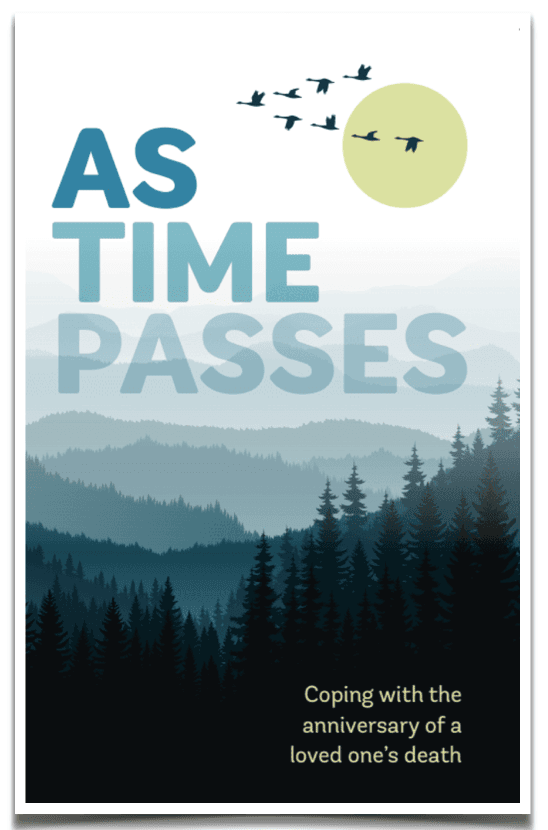Grief is an intricate tapestry woven from love, loss, and longing. Among the many facets of mourning, the anniversary of a loved one’s death stands out as a poignant marker in the passage of time. Each year, as the date approaches, emotional currents surge like ocean waves, sometimes overwhelming those still navigating their grief. But why does this specific day hold such a profound significance? Perhaps it is a convergence of memories, unfulfilled dreams, and the haunting reality of mortality that creates a cocktail of emotions—both beautiful and painful.
Anniversaries serve as ethereal markers, reminding us not just of the absence of our beloved but also of the life we shared. The date can evoke nostalgia, triggering a flood of memories—some sweet, some tainted with sorrow. For many, these recollections are unrestrained by time; they remain vivid and bittersweet reminders of past joys. It’s as if the fabric of memory is woven with threads of both laughter and tears, creating an emotional tapestry that can be difficult to unravel.
On an anniversary, one might feel a rush of emotions, ranging from melancholy to a deeper sense of connection to the deceased. This duality often surprises individual grievers. Joy mingles with pain, as moments of remembrance may elicit smiles even amid tears. It’s a testament to the deep impact that our departed loved ones leave behind; they continue to inhabit our hearts and minds, influencing our lives in both tangible and intangible ways.
Understanding that these feelings are not only normal but also a reflection of profound love can provide a semblance of comfort. The anniversary serves as an involuntary pilgrimage back to the moments that defined your relationship. As you engage with these recollections, it’s essential to acknowledge the emotional nuances they elicit. When processed, these feelings may cultivate a rich soil where healing can take root.
For many, establishing new rituals around this significant date can transform the experience from one of painful observation to an opportunity for connection. Rather than shying away from the memories, consider embracing them. This may involve lighting a candle in remembrance, baking a favorite dish of the deceased, or sharing stories with family and friends. Each action serves as a bridge to both the past and those still present, fostering a sense of community in an often isolating journey.
Moreover, engaging in such rituals can facilitate a space for vulnerability. It is in these moments of shared remembrance that a new understanding of the loss might emerge. Conversations can meander through joyful anecdotes about the deceased, allowing tears, laughter, and love to exist side by side. This collective remembrance not only honors the memory of the loved one but also cements the bonds among those left behind. Together, families and friends can navigate the emotional landscape of grief, creating a safe harbor for those struggling with sorrow.
In contrast, the anniversary of a loved one’s passing can also catalyze feelings of isolation. For some, the world appears blissfully unaware of the internal turmoil raging in the heart. Friends may inadvertently avoid the subject, leading to a sense of disconnection. It is crucial to articulate your needs to those around you, providing them with insight into how they can support you. A simple “I would appreciate it if we could talk about them today,” can open doors to understanding and compassion.
Reflection can also be an empowering tool during this time. Taking a moment to journal or meditate can provide clarity on your emotions, facilitating deeper introspection. By articulating your grief, you create a narrative that honors your loved one’s memory and your ongoing journey. Reflect on how they impacted your life, the values they instilled in you, and how you continue to carry them forward. This exploration can foster a profound sense of continuity, blending the past with the present.
Yet, it is essential to acknowledge that grief can manifest in myriad ways. Some may feel an overwhelming urge to commemorate the day with grand gestures, while others may prefer solitude. Neither approach is inherently right or wrong; what matters is that each person finds a method that resonates with their personal experience. Deference to individual grief journeys creates a space where everyone’s mourning is valid and honored.
As we navigate these emotional waters, it is also important to remember that healing does not occur linearly. Anniversaries may bring a resurgence of grief, even years after the initial loss. This phenomenon can be attributed to the intertwining of time and memory—two potent forces that shape our experience of loss. Allowing yourself the freedom to grieve anew validates the enduring impact of your loved one’s absence, indicating that their significance in your life remains steadfast.
Lastly, as you contemplate the rich tapestry of memories associated with your loved one, it is crucial to remember that the love you shared extends beyond their physical presence. They remain a part of your narrative, woven intricately into the person you are becoming. While the pain may ebb and flow like the tide, the essence of that love is eternal, colored with nuances that only those who have walked a similar path can truly appreciate.
In conclusion, coping with the anniversary of a loved one’s death is a complex journey filled with emotional peaks and valleys. By acknowledging these rich layers of feeling and engaging meaningfully with remembrance, one can transform sorrow into a tribute of love and resilience. In doing so, we create a legacy not only for our dearly departed but also for our own hearts, allowing space for healing, joy, and continued connection.
